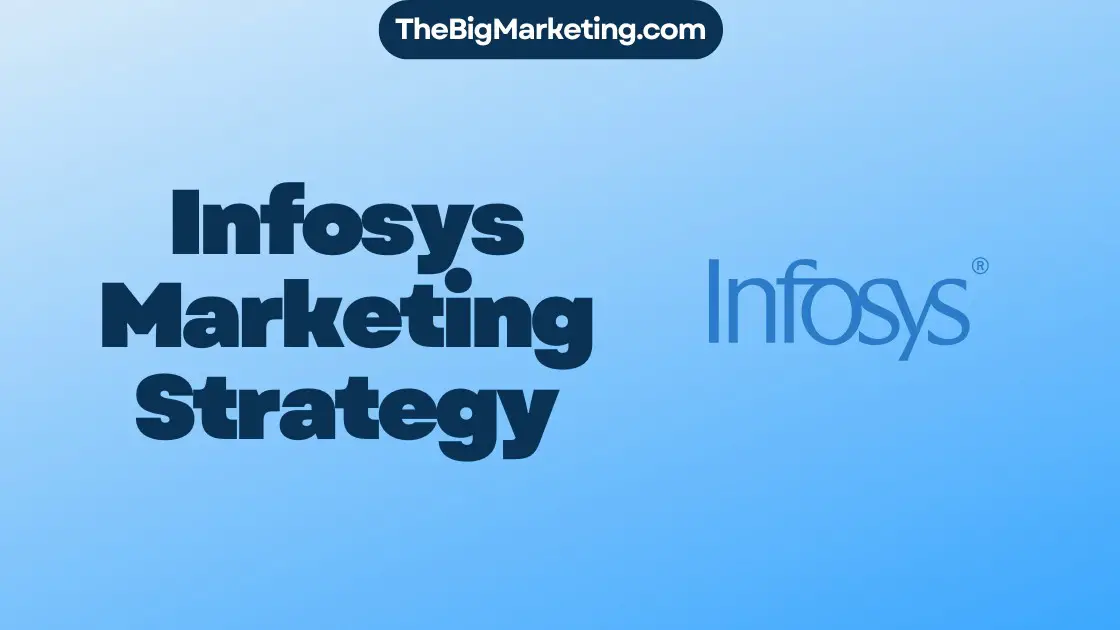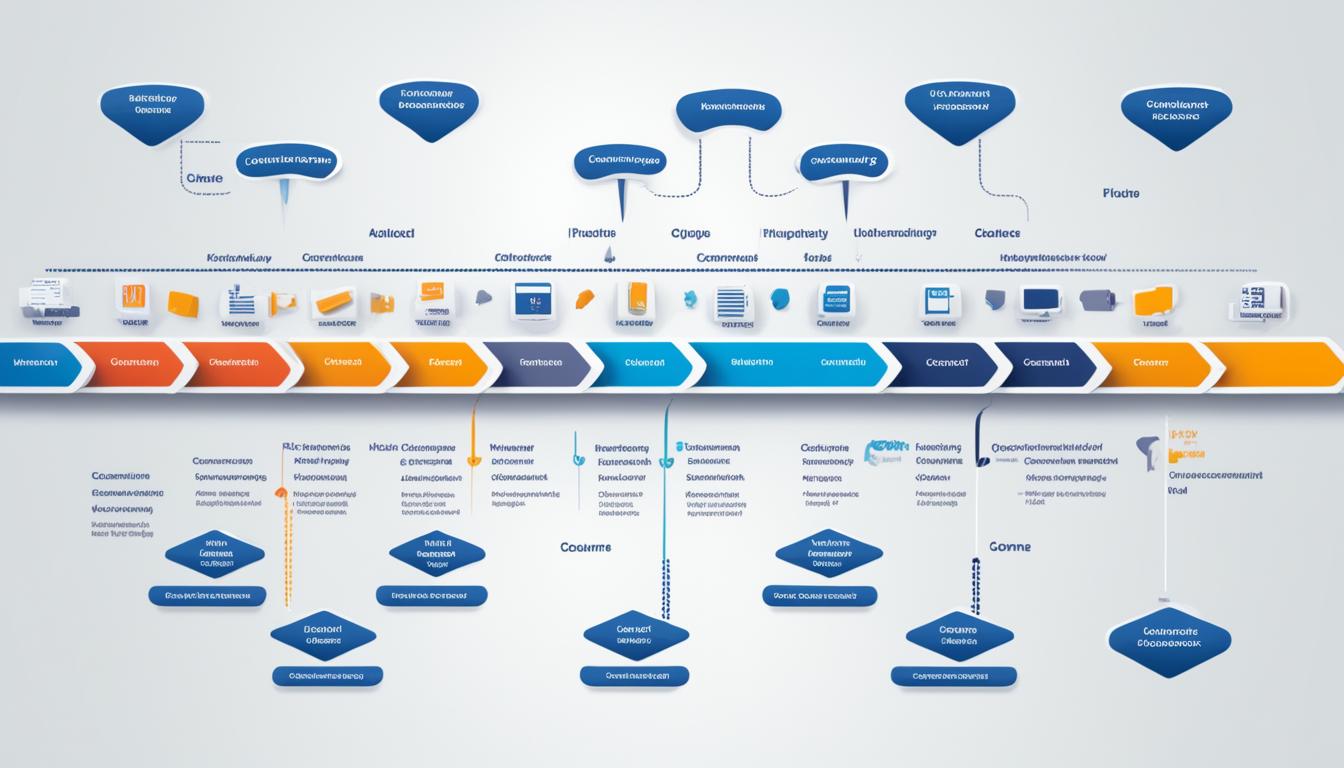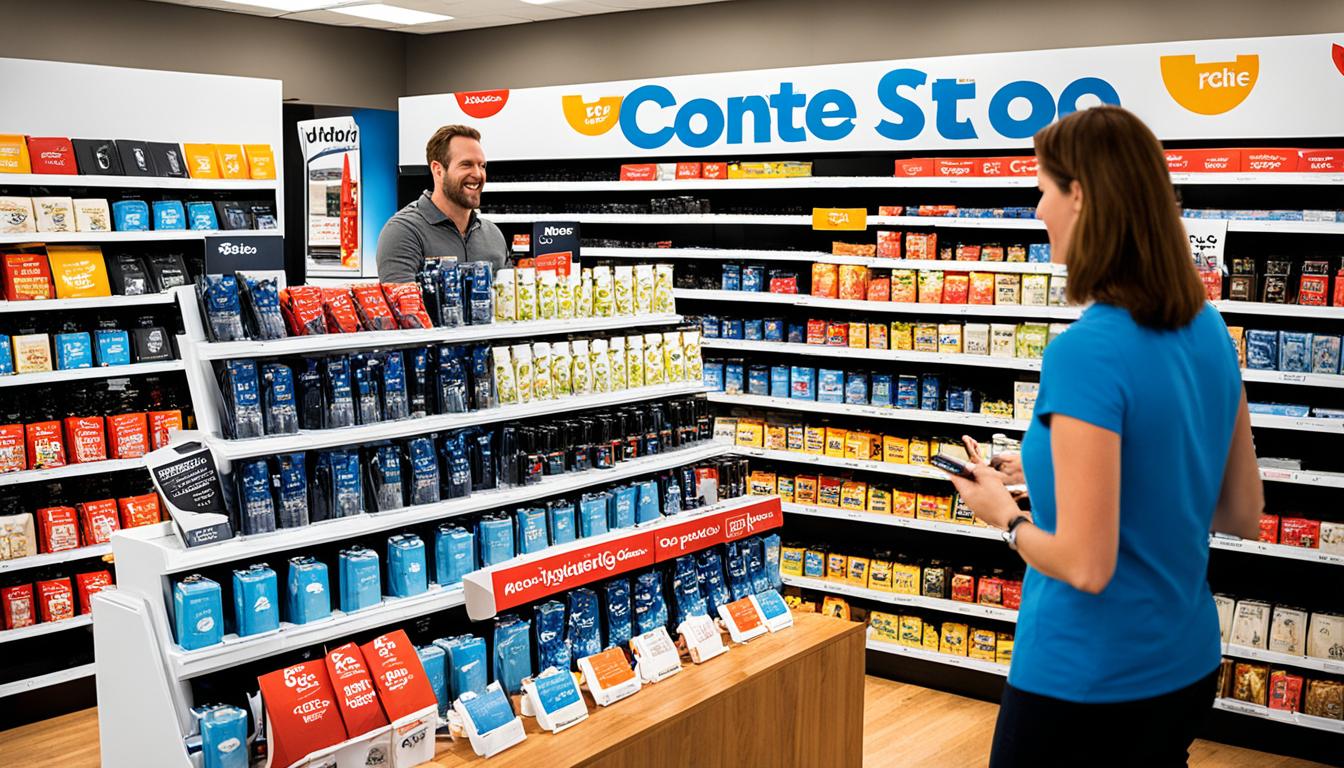Interviewing for the role of a Marketing Communications Director is a significant step in advancing your career in the marketing and communications field. This position requires a unique blend of strategic thinking, creativity, and leadership skills, making the interview process particularly rigorous. To help you prepare, we have compiled a list of the top 33 interview questions and answers that are commonly asked in interviews for this role. This guide aims to equip you with the insights and confidence needed to excel during your interview.
Understanding the expectations and requirements of a Marketing Communications Director is crucial for success. This role involves overseeing the development and implementation of marketing and communication strategies, managing brand communication, and leading a team to achieve the company’s marketing goals. Our carefully selected questions and answers will touch on various aspects of the job, from strategic planning and crisis management to team leadership and performance evaluation, providing a comprehensive preparation tool for your upcoming interview.
Marketing Communications Director Interview Preparation Tips
| Focus Area | Details | Tips |
|---|---|---|
| Understanding of Role | Get a deep understanding of what the role entails, including strategic planning, brand management, digital marketing, and public relations. | Research the company’s marketing campaigns and communication strategies. Align your experience and skills with the role’s requirements. |
| Technical Skills | Familiarize yourself with the technical tools and platforms used in marketing communications, such as CRM software, analytics tools, and content management systems. | Highlight your proficiency with specific tools during the interview. Mention any certifications or courses you’ve taken. |
| Strategic Thinking | Be prepared to discuss how you plan, develop, and execute marketing and communication strategies. | Think of examples where your strategy led to measurable success. Discuss how you adapt strategies to different markets or audiences. |
| Leadership | Understand the leadership qualities required for directing a team towards achieving marketing goals. | Share specific instances where you led a team to meet or exceed targets. Talk about how you motivate and develop your team. |
| Crisis Management | Be ready to explain how you handle negative press or a crisis affecting the company’s reputation. | Describe a situation where you managed a crisis effectively. Highlight your quick decision-making and strategic communication skills. |
| Creativity and Innovation | Show how you’ve contributed innovative ideas to your previous roles and how you stay abreast of the latest marketing trends. | Bring a portfolio or case studies that showcase your creative projects. Discuss how you encourage creativity within your team. |
| Budget Management | Discuss your experience managing budgets, allocating resources, and measuring ROI. | Prepare examples of how you optimized budgets for maximum impact. Talk about any cost-saving measures you implemented without compromising quality. |
| Cultural Fit | Employers look for candidates who not only have the skills but also fit well with the company culture. | Research the company’s values, mission, and work environment. Share how your personal values and work style align with the company’s culture. |
1. Can You Walk Us Through A Successful Marketing Campaign You Developed From Start To Finish?
Tips to Answer:
- Highlight your role in the campaign’s conception, development, and execution to illustrate your leadership and project management skills.
- Use specific metrics to demonstrate the campaign’s success and your ability to meet or exceed set goals.
Sample Answer: In my previous role, I led a campaign aimed at increasing brand awareness and sales for a new product. I started by conducting market research to identify our target audience and their preferences. Based on the insights, we crafted a compelling message that resonated with our audience. I spearheaded the development of a multi-channel strategy, utilizing social media, email marketing, and PPC ads. I closely monitored the campaign’s performance, making data-driven adjustments to optimize our results. By the campaign’s end, we had surpassed our sales targets by 20% and significantly increased our social media engagement, demonstrating the effectiveness of our approach and my ability to lead a successful marketing campaign.
2. How Do You Approach Setting Marketing Goals and KPIs for A Campaign?
Tips to Answer:
- Highlight the importance of aligning marketing goals with business objectives to ensure that every effort contributes to the broader mission of the company.
- Emphasize the role of data in setting realistic and achievable KPIs, including historical performance analysis, industry benchmarks, and target audience insights.
Sample Answer: In setting marketing goals and KPIs for a campaign, I start by thoroughly understanding the key business objectives. This alignment ensures that our marketing efforts directly support the company’s goals. I then dive into data analysis, looking at past campaign performances, current industry benchmarks, and insights about our target audience. This data-driven approach allows me to set realistic, achievable KPIs that are tailored to our specific goals, such as increasing brand awareness, generating leads, or boosting sales. I believe in setting SMART (Specific, Measurable, Achievable, Relevant, Time-bound) goals to keep the team focused and on track throughout the campaign.
3. How Do You Stay Updated On The Latest Marketing Trends And Technologies?
Tips to Answer:
- Subscribe to leading marketing news outlets and blogs to get insights and updates on emerging trends.
- Engage in continuous learning through webinars, courses, and industry conferences to understand new technologies and methodologies in marketing.
Sample Answer: I actively subscribe to several leading marketing newsletters like HubSpot and MarketingProfs, ensuring I receive daily updates on industry trends and technologies. I also allocate time each week to attend webinars and online courses, focusing on emerging marketing tools and strategies. This habit not only keeps me informed but also inspires me to experiment with new techniques in my projects. Networking with other marketing professionals through online forums and attending industry conferences is another key strategy I use to exchange ideas and stay ahead in the field.
4. How Do You Ensure Alignment Between Marketing Strategies And Business Objectives?
Tips to Answer:
- Demonstrate understanding of the business’s core objectives and how marketing strategies can be tailored to support these goals.
- Highlight the importance of continuous communication with other departments to ensure marketing efforts are in sync with the company’s vision and mission.
Sample Answer: In my previous role, ensuring alignment between our marketing strategies and the company’s business objectives was a top priority. I started by gaining a deep understanding of the business’s short-term and long-term goals. This knowledge allowed me to tailor our marketing strategies to directly support these objectives. For instance, if the business aimed to increase market share in a specific segment, I focused our marketing efforts on targeted campaigns designed to appeal to that segment. Regular meetings with the leadership and other departments helped keep our marketing alignment in check, ensuring our strategies always supported the broader business goals. This approach not only maximized our marketing effectiveness but also contributed significantly to the company’s growth.
5. How Do You Define and Maintain Brand Consistency Across Various Marketing Channels?
Tips to Answer:
- Highlight the importance of understanding your brand’s core values and voice as the foundation for consistency.
- Mention the use of brand guidelines and regular cross-departmental communications to ensure cohesive messaging.
Sample Answer: In my role, defining and maintaining brand consistency starts with a deep dive into our brand’s core values, mission, and target audience. I spearhead the creation of comprehensive brand guidelines that cover everything from visual elements like logos and color schemes to tone of voice and messaging. These guidelines are shared across all departments to ensure everyone is on the same page. I conduct regular meetings with teams across various channels to review content and campaigns, making sure they align with our brand identity. It’s about constant vigilance and open communication, ensuring that every piece of marketing, whether it’s an email blast or a social media post, resonates with our brand’s essence.
6. Can You Provide An Example Of A Successful Brand Positioning Strategy You Implemented?
Tips to Answer:
- Highlight a specific brand positioning strategy you’ve implemented, focusing on the objectives, actions taken, and the measurable outcomes.
- Reflect on the challenges faced during the implementation and how you overcame them to ensure the success of the strategy.
Sample Answer: In my previous role, I spearheaded a rebranding project aimed at positioning our tech product as the go-to solution for small businesses struggling with inventory management. We started by conducting market research to understand our target audience’s pain points. Based on the insights, we crafted a message that emphasized ease of use and affordability, differentiating us from competitors that targeted larger enterprises. I led a cross-functional team to integrate this messaging across all marketing channels, from our website to social media. To measure success, we tracked engagement rates, website traffic, and, most importantly, sales metrics. Within six months, we saw a 40% increase in inquiries from small businesses, and sales rose by 25%. The strategy not only positioned us effectively in a niche market but also significantly boosted our brand visibility and revenue.
7. How Do You Handle Brand Reputation Management In The Face Of Negative Publicity?
Tips to Answer:
- Reflect on a real-life scenario where you successfully managed a brand’s reputation during a crisis, highlighting the strategies you used and the results achieved.
- Emphasize the importance of quick response, transparent communication, and taking responsibility where necessary to rebuild trust.
Sample Answer: In my previous role, we faced a product recall that threatened our brand’s reputation. Recognizing the urgency, I immediately assembled a crisis management team to address the issue. We launched a transparent communication strategy across all our channels, explaining the defect, the steps we were taking to rectify the situation, and how customers could get replacements or refunds. I personally monitored social media feedback and engaged with customers directly to understand their concerns. By taking responsibility and actively engaging with our community, we managed to not only resolve the crisis but also strengthen our brand loyalty. Our swift and transparent response turned a potential disaster into a testament to our commitment to customer satisfaction.
8. How Do You Approach Developing A Content Strategy That Resonates With The Target Audience?
Tips to Answer:
- Focus on understanding the target audience deeply, including their needs, preferences, and challenges, to create relevant and engaging content.
- Emphasize the importance of data and analytics in refining content strategy over time, ensuring it remains aligned with audience interests and behaviors.
Sample Answer: In developing a content strategy, I start by diving deep into audience research. I use surveys, social media interaction, and customer feedback to grasp what our audience truly cares about. This insight forms the foundation of our content themes and topics, ensuring we produce material that not only attracts but also retains our audience’s attention. I prioritize flexibility in our strategy, regularly reviewing performance metrics to identify what’s working and what’s not. This agile approach allows us to adapt quickly, maintaining our audience’s engagement and driving meaningful results for our brand.
9. What Tools And Metrics Do You Use To Measure The Effectiveness Of Content Marketing Efforts?
Tips to Answer:
- Focus on discussing a range of analytical tools (e.g., Google Analytics, SEMrush, HubSpot) you have experience with, highlighting how each tool helps in understanding different facets of content performance such as engagement, conversion rates, and SEO impact.
- Explain how you use specific metrics (e.g., page views, bounce rate, conversion rate, social shares) to gauge content effectiveness, and adjust strategies based on data-driven insights.
Sample Answer: In measuring the success of content marketing, I rely on Google Analytics for a comprehensive view of user engagement and conversion paths. Tools like SEMrush offer insights into SEO performance and keyword rankings, vital for optimizing content. I track metrics such as page views, bounce rates, and conversion rates to understand how well content resonates with our audience. Social shares and comments are also crucial metrics, as they provide a direct measure of content’s impact and reach. Based on these insights, I refine our content strategy to continually improve performance and achieve our marketing goals.
10. How Do You Ensure Content Is Optimized For SEO And Drives Organic Traffic?
Tips to Answer:
- Focus on the importance of keyword research and how it guides content creation to match user intent.
- Highlight the role of analytics in refining SEO strategies based on performance data.
Sample Answer: In my approach to optimizing content for SEO, I start with comprehensive keyword research to understand what our target audience is searching for. This ensures our content is aligned with user intent, making it more likely to rank well in search engine results. I use tools like Google Analytics and SEMrush to monitor the performance of our content, looking closely at metrics such as page views, bounce rate, and organic traffic. Based on this data, I continuously refine our SEO strategies, adjusting keywords and content structure as needed. Additionally, I ensure all content is mobile-friendly and loads quickly, as these factors significantly affect SEO rankings.
11. What Experience Do You Have With Digital Marketing Channels Such As Social Media, Email, And PPC?
Tips to Answer:
- Highlight specific campaigns where you successfully utilized these channels, including the strategies you implemented and the results achieved.
- Emphasize your ability to adapt to changes within digital marketing channels and how you stay informed about the latest trends and technologies.
Sample Answer: In my previous role, I spearheaded a multi-channel digital marketing campaign that encompassed social media, email marketing, and PPC to increase brand awareness and sales. For social media, I leveraged targeted ads and engaging content that doubled our follower engagement within three months. In email marketing, I developed personalized email sequences based on user behavior, resulting in a 25% increase in open rates. With PPC, I optimized our ad spend by focusing on high-converting keywords, which decreased our cost per acquisition by 40%. I continuously analyze performance data to tweak and improve our strategies, ensuring we stay ahead in the rapidly evolving digital landscape.
12. How Do You Approach Integrating Digital Marketing Into Overall Marketing Campaigns?
Tips to Answer:
- Highlight the importance of aligning digital marketing strategies with the campaign’s core objectives and target audience insights.
- Emphasize the role of data in making informed decisions about channel selection, content creation, and timing for digital marketing initiatives.
Sample Answer: In integrating digital marketing into campaigns, I start by deeply understanding our target audience and campaign goals. This insight drives my strategy, ensuring each digital channel, from social media to email marketing, serves a specific purpose aligned with our objectives. I rely heavily on data to decide which channels are most effective for our audience, optimizing content and timing to maximize engagement and conversions. Regular analysis and adjustments are key to keeping the strategy responsive to audience behavior and campaign performance metrics.
13. Can You Share A Successful Digital Marketing Campaign You Led?
Tips to Answer:
- Discuss specific results achieved, such as increased engagement, higher conversion rates, or improved ROI. Mention any metrics used to measure success.
- Explain the strategy and creativity behind the campaign, how you targeted the audience, and adapted to feedback or analytics data throughout the campaign.
Sample Answer: In my previous role, I spearheaded a digital marketing campaign focused on increasing brand awareness and customer engagement for a new product launch. We leveraged targeted social media ads, influencer partnerships, and an interactive online contest to generate buzz. By closely monitoring engagement metrics and customer feedback, we adjusted our content strategy in real-time, significantly enhancing the campaign’s reach. The result was a 40% increase in social media engagement and a 25% uplift in sales during the campaign period. This success was a testament to our team’s ability to creatively engage our target audience and adapt our tactics based on data-driven insights.
14. How Do You Build And Lead A Successful Marketing Team?
Tips to Answer:
- Highlight your leadership style, emphasizing collaboration, open communication, and empowerment of team members to contribute their ideas and expertise.
- Discuss specific strategies you have used to foster team development, such as regular training sessions, team-building activities, and setting clear, measurable goals for each member.
Sample Answer: In leading a marketing team, I prioritize creating an environment where every member feels valued and empowered. I start by clearly defining roles and responsibilities, ensuring everyone understands their contribution to our shared goals. Regular one-on-one meetings help me stay connected with each team member, providing a platform for feedback and personal development discussions. I believe in leveraging individual strengths and fostering a culture of continuous learning. This approach has helped us not only to meet our targets but also to innovate and adapt quickly to new challenges in the market.
15. How Do You Handle Conflicts Within a Team or Between Team Members?
Tips to Answer:
- Reflect on a specific instance where you successfully resolved a conflict, focusing on your approach and the steps you took to mediate the situation.
- Emphasize your ability to listen to all sides, remain neutral, and work collaboratively towards a resolution that respects everyone’s perspectives and aligns with team goals.
Sample Answer: In my experience, conflicts are inevitable in a team setting, but they can be resolved effectively with the right approach. I recall a situation where two team members had a disagreement on a project’s direction. I intervened by first giving each of them the floor to express their viewpoints without interruption. Recognizing the validity in both perspectives, I suggested a compromise that incorporated elements from both ideas. This approach not only resolved the conflict but also demonstrated how collaboration could lead to a stronger outcome. My key to managing conflicts is to ensure open communication, promote mutual respect, and steer the team towards a common goal.
15. How Do You Handle Conflicts Within A Team Or Between Team Members?
Tips to Answer:
- Emphasize the importance of active listening and empathy to understand each team member’s perspective before making any judgments.
- Highlight the significance of fostering a culture of open communication and mutual respect to encourage team members to voice their concerns and ideas freely.
Sample Answer: In my experience, handling conflicts starts with active listening. I make it a point to understand all perspectives involved without bias. This approach allows me to identify the root cause of the disagreement. I then facilitate a discussion between the parties, promoting open communication and ensuring each member feels heard and respected. By focusing on common goals and how each team member’s strengths can contribute to a solution, I guide them towards a collaborative resolution. I also use these instances as learning opportunities to strengthen team cohesion and prevent similar conflicts in the future.
17. How Do You Approach Budgeting For Marketing Campaigns And Initiatives?
Tips to Answer:
- Highlight your ability to align budgeting with strategic goals while optimizing resources for maximum impact.
- Mention the importance of data analysis in forecasting and tracking spending against results.
Sample Answer: In approaching budgeting for marketing campaigns, I start by defining clear objectives and KPIs to ensure that every dollar spent is strategic and measurable. I closely analyze past campaign performances and market trends to forecast budget needs accurately. I prioritize spending on channels and tactics proven to deliver the highest ROI, while always leaving room for testing innovative approaches. Regularly reviewing the budget against performance allows me to adjust allocations in real-time, ensuring resources are optimized for the best possible outcomes. Collaboration with finance and sales teams is also crucial to ensure that the budget supports not only marketing objectives but also the financial health and growth targets of the business.
18. How Do You Measure And Report On The ROI Of Marketing Activities?
Tips to Answer:
- Use specific examples from past marketing campaigns to illustrate how you measured ROI, including the tools and methodologies used.
- Discuss how you communicated these results to stakeholders and how this data informed future marketing decisions.
Sample Answer: In my previous role, I focused on measuring the ROI of our marketing activities by closely monitoring key performance indicators, such as conversion rates, customer acquisition costs, and lifetime value of a customer. I used a combination of Google Analytics and CRM data to track these metrics accurately. For reporting, I developed a custom dashboard that consolidated all key data points, making it easy for stakeholders to understand the effectiveness of our marketing efforts. This approach not only demonstrated the tangible benefits of our campaigns but also guided us in allocating our budget more efficiently for future projects. I believe in transparent communication and used monthly meetings to present these insights, ensuring all relevant departments were aligned and could leverage this data for strategic planning.
19. Can You Provide An Example Of A Campaign Where You Achieved A High ROI?
Tips to Answer:
- Reflect on a specific marketing campaign where you meticulously planned and executed strategies that significantly exceeded expected outcomes. Highlight the process, challenges, and how you overcame them.
- Quantify your success by providing clear metrics that demonstrate the high return on investment (ROI). This could include percentage increases in sales, customer engagement, or other relevant KPIs.
Sample Answer: In my previous role, I spearheaded a digital marketing campaign aimed at boosting product awareness and sales within a highly competitive market. Initially, we conducted thorough market research to identify our target audience’s preferences and pain points. Based on these insights, we crafted a multifaceted campaign that combined SEO-optimized content, targeted social media ads, and strategic email marketing. We faced challenges, such as budget constraints and shifting market trends, but remained adaptable, reallocating resources efficiently and tweaking our approach based on real-time analytics. The campaign resulted in a 120% increase in online sales and a 75% boost in engagement on our social platforms within three months, significantly exceeding our projected ROI. This success was a testament to our team’s ability to innovate, execute, and deliver measurable results.
20. How Do You Handle A Marketing Crisis Or Unexpected Negative Publicity?
Tips to Answer:
- Highlight your ability to stay calm and strategic, focusing on transparent communication with stakeholders.
- Emphasize the importance of a prepared crisis management plan and your experience in adapting strategies quickly to mitigate negative impacts.
Sample Answer: In facing a marketing crisis or unexpected negative publicity, my first step is to gather all the facts and assess the situation thoroughly. I prioritize transparent and honest communication with our audience and stakeholders. I’ve found that acknowledging the issue quickly and taking responsibility when necessary helps maintain trust. I then work closely with my team to develop a clear, concise response plan, ensuring our messaging is consistent across all channels. My experience has shown that actively monitoring feedback and being ready to adjust our approach is crucial in navigating through a crisis. This proactive and open approach has helped me successfully manage several challenging situations in the past.
21. Can You Share An Experience Where You Successfully Navigated A Crisis Situation In Marketing?
Tips to Answer:
- Reflect on a specific marketing crisis you encountered and explain the steps you took to address it, emphasizing problem-solving and communication skills.
- Highlight the outcomes of your actions, focusing on how you mitigated the crisis’s impact and what you learned from the experience to prevent future issues.
Sample Answer: In my previous role, we faced a product recall that risked damaging our brand’s reputation. Immediately, I convened a crisis management team, and we developed a comprehensive communication strategy targeting our customers, stakeholders, and the media. We prioritized transparency and proactive updates, ensuring our messaging was consistent across all channels. Through social media, press releases, and direct customer outreach, we explained the recall’s reasons, the steps customers should take, and how we were addressing the issue to prevent future occurrences. Our prompt and clear communication helped maintain customer trust, and we successfully turned a potentially disastrous situation into a demonstration of our commitment to safety and transparency. Reflecting on this, I learned the importance of a well-prepared crisis management plan and the value of open communication with stakeholders.
22. How Do You Use Data and Analytics to Inform Marketing Decisions?
Tips to Answer:
- Reference specific analytics tools (e.g., Google Analytics, SEMrush) you have experience with, explaining how you have used these tools to drive decision-making in past marketing campaigns.
- Discuss how you segment data to understand different customer behaviors and preferences, leading to more targeted and effective marketing strategies.
Sample Answer: In my role, I rely heavily on tools like Google Analytics and SEMrush to gather insights into customer behavior and campaign performance. For instance, by analyzing website traffic and conversion rates, I identify which channels are most effective for reaching our target audience. I segment this data by demographics and buyer behavior, allowing me to tailor our marketing efforts more precisely. This approach has enabled us to increase our conversion rates significantly by focusing on the channels and content that resonate most with our segments.
23. What Key Performance Indicators Do You Prioritize When Evaluating Marketing Performance?
Tips to Answer:
- Focus on specific KPIs that directly relate to the campaign’s objectives, such as conversion rates, lead generation, or engagement metrics.
- Mention the importance of aligning KPIs with business goals and how you adjust strategies based on performance data.
Sample Answer: In evaluating marketing performance, I prioritize KPIs that align closely with our strategic goals. For example, if our aim is to increase brand awareness, I look at social media engagement rates and website traffic. In campaigns focused on sales, conversion rate becomes my top priority. I utilize analytics tools to monitor these KPIs in real-time, allowing me to make data-driven adjustments to our marketing strategies. Understanding the relationship between different KPIs and how they impact our business objectives is key to my approach. This ensures that every marketing activity contributes to our success.
24. How Do You Ensure Data Privacy And Compliance In Marketing Activities?
Tips to Answer:
- Highlight your awareness of relevant data protection regulations such as GDPR or CCPA and describe how you integrate these regulations into your marketing strategies.
- Mention your experience with tools and technologies that aid in maintaining data privacy and ensuring compliance, emphasizing your proactive approach to safeguarding customer information.
Sample Answer: In my role, ensuring data privacy and compliance is paramount. I stay updated with laws like GDPR and CCPA, integrating their guidelines directly into our marketing strategies. I conduct regular training sessions for my team on data protection principles and utilize encryption technologies and secure data management platforms to safeguard customer information. I also work closely with our legal team to audit our marketing activities and ensure we’re always ahead of compliance requirements. My proactive approach helps maintain trust with our audience while protecting the brand’s reputation.
25. How Do You Collaborate With Other Departments Such As Sales, Product, And Customer Service?
Tips to Answer:
- Highlight specific strategies or tools you use to facilitate communication and collaboration across departments.
- Share examples of successful outcomes from past collaborations, emphasizing the benefits of interdepartmental teamwork.
Sample Answer: In my role, collaboration across departments is key to achieving cohesive marketing strategies. I use regular cross-functional meetings and shared project management tools to ensure transparent communication. For instance, working closely with the Sales team, I’ve developed targeted marketing campaigns based on their insights from customer feedback, leading to a notable increase in lead quality and conversion rates. Partnering with Product and Customer Service teams has also allowed me to gather valuable customer insights, ensuring our marketing messages are always aligned with our audience’s needs and expectations. This approach not only enhances the effectiveness of our campaigns but also fosters a culture of unity and shared goalsn within the company.
26. How Do You Manage Relationships With External Agencies, Partners, and Vendors?
Tips to Answer:
- Highlight your communication skills and ability to maintain positive relationships, emphasizing regular updates and feedback loops to ensure alignment with project goals.
- Discuss your experience with negotiation and conflict resolution, showcasing how you’ve successfully navigated challenges to maintain productive partnerships.
Sample Answer: In managing relationships with external agencies, partners, and vendors, I prioritize clear, consistent communication. I start by setting expectations early and ensure all parties are aligned with the project’s objectives. Regular meetings and updates are part of my strategy to keep everyone on the same page. I believe in the power of feedback, both giving and receiving, to refine processes and improve outcomes. When faced with challenges, I rely on my negotiation skills to find solutions that benefit all involved, always aiming to strengthen the partnership and achieve our mutual goals. This approach has allowed me to maintain strong, productive relationships with external stakeholders, contributing significantly to the success of our projects.
27. Can You Provide An Example Of A Successful Cross-Functional Marketing Project You Led?
Tips to Answer:
- Discuss a specific project where collaboration between multiple departments led to a successful outcome. Highlight your role in facilitating this collaboration.
- Emphasize the results achieved by the project, such as increased sales, enhanced brand awareness, or improved customer satisfaction. Use quantifiable metrics to back up your claims.
Sample Answer: In my last role, I spearheaded a cross-functional initiative aimed at launching a new product line. Collaborating closely with the Product, Sales, and Customer Service teams, we identified key market opportunities and customer pain points. My role involved coordinating the marketing activities, ensuring all messaging was consistent across channels, and aligning the campaign goals with the sales strategies. We utilized a mix of digital advertising, content marketing, and targeted email campaigns, which I closely monitored for performance. The result was a 25% increase in sales within the first three months post-launch, exceeding our initial projections. This project stands out as a testament to the power of cross-departmental collaboration in achieving significant business results.
28. How Do You Stay Informed About Industry Trends And Competitor Activities?
Tips to Answer:
- Stay proactive by subscribing to industry newsletters, attending webinars, and participating in relevant forums and conferences to keep abreast of the latest trends and competitor strategies.
- Leverage analytics tools to monitor competitor online activities and market changes, enabling you to adapt your marketing strategies quickly and effectively.
Sample Answer: I make it a priority to stay updated on industry trends and competitor activities by dedicating time each week to read through specific industry newsletters and reports. I also use tools like Google Alerts for instant updates on competitors and market trends. Attending key industry events, either virtually or in person, is another strategy I employ to gain insights directly from market leaders and innovators. This approach allows me to quickly identify shifts in the market or new strategies being adopted by competitors, enabling me to adjust our marketing tactics in a timely manner to maintain a competitive edge.
29. Can You Discuss A Recent Marketing Campaign From A Competitor That Impressed You?
Tips to Answer:
- Reflect on why the campaign was impressive, focusing on its creativity, execution, and the impact it had on its audience. Consider how it differentiated itself in the market.
- Discuss what you learned from the campaign and how those insights could be applied or adapted to your own marketing strategies, ensuring to maintain originality and brand alignment.
Sample Answer: Recently, I was particularly impressed by a competitor’s campaign that leveraged user-generated content to increase engagement. They encouraged their audience to share their own stories related to the product, creating a sense of community and authenticity around the brand. This approach not only amplified their reach organically but also strengthened customer loyalty. It reminded me of the power of storytelling and community in marketing. Analyzing this, I see the value in incorporating more user-generated content into our strategies, tailored to fit our brand and audience, to foster a similar level of engagement and authenticity.
30. How Do You Adapt Marketing Strategies to Changes in The Industry Landscape?
Tips to Answer:
- Highlight your ability to stay informed about industry trends and use data analytics to make informed decisions.
- Emphasize your flexibility and creativity in adjusting marketing plans to meet new challenges and opportunities.
Sample Answer: In my role, adapting to industry changes is crucial. I continuously monitor market trends and consumer behavior through various analytics tools. This helps me anticipate shifts and adjust our marketing strategies accordingly. For example, during a sudden rise in social media use for product discovery, I quickly shifted our focus towards influencer partnerships and content marketing on these platforms. This proactive approach not only kept us relevant but also improved our engagement rates significantly. My strategy is always to stay agile, test new approaches, and optimize based on performance data.
31. What Motivates You In Your Role As A Marketing Communications Director?
Tips to Answer:
- Reflect on specific aspects of your job that excite you, such as the creativity involved in developing campaigns, the thrill of seeing your strategies succeed, or the satisfaction of overcoming challenges.
- Discuss how you find motivation in contributing to the company’s growth, enhancing brand awareness, or driving meaningful engagement with customers.
Sample Answer: In my role as a Marketing Communications Director, I find immense motivation in the creative process behind crafting impactful marketing messages. The opportunity to innovate and experiment with new strategies keeps me engaged and excited about my work every day. Seeing a campaign go from concept to execution and ultimately achieving its intended results is incredibly rewarding. Additionally, the chance to influence consumer perceptions and contribute to building a strong, recognizable brand drives me. Witnessing firsthand the positive impact our marketing efforts have on the company’s success and our customers’ satisfaction is what fuels my passion for this field.
32. How Do You Continue To Develop Your Skills And Knowledge In The Field Of Marketing?
Tips to Answer:
- Engage regularly in professional development opportunities, such as workshops, seminars, and online courses, to stay abreast of the latest marketing trends and technologies.
- Actively participate in marketing communities and networks, both online and offline, to exchange knowledge and experiences with peers.
Sample Answer: I prioritize continuous learning and actively seek out opportunities to enhance my marketing expertise. By attending industry workshops and seminars, I ensure I’m updated with the latest trends and technologies. I’ve also enrolled in several online courses that focus on emerging marketing strategies and digital tools. Networking plays a crucial role in my professional development; I’m part of several marketing forums and communities where I exchange insights and experiences with fellow marketers. This blend of formal education and peer learning allows me to apply the most current and effective strategies in my work.
33. Where Do You See The Future Of Marketing Communications Heading, And How Do You Plan To Stay Ahead Of The Curve?
Tips to Answer:
- Reflect on current trends in marketing communications, such as digital transformation, personalization, and the use of AI and data analytics. Consider how these might evolve and impact marketing strategies.
- Discuss your commitment to continuous learning and staying informed through industry publications, attending webinars/conferences, and networking with other professionals.
Sample Answer: In my view, the future of marketing communications is increasingly digital, personalized, and data-driven. We’re moving towards a landscape where understanding consumer behavior through data analytics and AI will be crucial. To keep pace, I actively follow industry news, participate in professional forums, and attend relevant training sessions. This not only enhances my current skill set but also prepares me for emerging trends. Additionally, I plan to leverage technologies that offer real-time insights into customer preferences, allowing for more targeted and effective campaigns.
Conclusion
In preparation for your Marketing Communications Director interview, mastering these top 33 questions and answers is crucial. They cover a broad range of topics that reflect the depth and breadth of knowledge and skills required for the role. Remember, the key to success lies not just in providing the right answers, but also in demonstrating your passion for marketing, your ability to think strategically and creatively, and your drive to stay ahead in a fast-evolving field. Tailor your responses to highlight your unique experiences, insights, and the value you can bring to the organization. Good luck!







